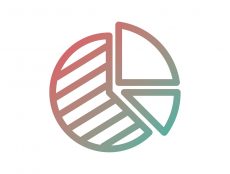
Gamification in the workplace refers to any number of digital technologies that are designed and implemented in order to motivate and teach employees, and increase productivity. Gamification typically makes use of online applications (although in-house proprietary ones are also developed and used) that provide employees with novel ways to learn about their roles, what is expected of them, and engage with their work.
In short, gamification is becoming widespread and very popular as an educational and motivational technique. Below are some of the most common instances of gamification in the workplace and why they are being used.
Gamification in the Workplace to Improve Communication
The gamification of communication learning and training aims to apply online game-based learning to the sometimes glaring communication shortcomings that are found in many modern organizations. A lack of or an inability to communicate is frequently cited as one of the major contributing factors to failure to execute projects.
Gamifying communication might seek to drive better office intranet usage, improve communication and feedback across departments and organizational hierarchies, and promote better exchanges between the organization and its clients. A valuable supplement to any communication-based gamification is a tool to help employees build their vocabulary so they are able to better transmit information and ideas.
Interactive Leaderboards
Many organizations are attempting to introduce friendly, but nonetheless productivity-enhancing competition into the workplace via gamification. Leaderboards help to keep track of a wide range of different performance metrics, depending on the department in question. They are becoming particularly common in sales departments where success is based on the number of new accounts brought or products sold.

In order to ensure the competition does not become toxic, many workplaces are developing a variety of different points-based and hierarchical leader categories to mitigate the effects of over-competition or counterproductive competition among employees
Gamification and Training
Many companies are beginning to realize the power of ‘gamified’ training for employees, especially for important upskilling initiatives. Positive feedback and the social nature of gaming combine to create powerful incentives to engage and learn. The kind of engagement that is possible with gamified training is harder to realize with traditional HR and training material, either in written, PowerPoint or even quiz form.
The gamification of online training can have a master narrative incorporated into the software to make sure employees are able to place the training within the wider context of their roles and the organization; can utilize “levels” and challenges that help to structure and systematize learning goals, and feature rewards, badges and instant feedback that encourage the learner to exert themselves to fully absorb the material and perform at their best.
Gamifying for Executives
Gamification isn’t just focusing on employee and lower management engagement and skillsets. Many organizations are also pursuing gamified learning for executive positions and professional development. This is particularly true of online leadership training. Companies are investing in SaaS that features immersive leadership scenarios which test executive leadership knowledge and decision-making.
Leadership gamification allows those being groomed for leadership positions or those currently in them to practice their communication, negotiation, time management, adaptability and problem-solving skills. These are the dynamic leadership skills companies believe they can train for and improve upon in their high performers, and gamification-based simulations and education offer controlled, highly accurate simulations to help prime leaders for success.
Gamification in Recruiting
Gamification is also becoming a more prominent feature of many organizations’ recruiting processes, allowing them to evaluate potential candidates for roles before starting them in the formal interview process. With this application of gamification, candidates are asked to log into an online software (either third party or proprietary) that will expose them to simulations of various role-related situations and have them react in-game.
This particular workplace gamification aims to assess how potential new hires might perform in the role, and especially how they may react to challenges or unfamiliar situations. These games provide players with lists of different reaction options or pathways through problems and tasks and typically calculate an aggregate score at the end of a module. Hiring managers can then assess the outcome and determine whether it makes sense to bring a person in to undergo the formal hiring procedure. Such gamification is likely to expand over the next several years as both working and hiring remotely become more prevalent.
Conclusion
Gamification in the workplace is relatively well-established at this point, with certain popular applications and online learning software now many years old. But as the technology becomes more sophisticated and integrated with things like augmented and virtual reality, the opportunities to upskill employees, increase their engagement and productivity, assess prospective hires, and instil invaluable leadership skills in top performers will grow considerably. The bottom line is that gamification in the workplace is most definitely here to stay.
Featured Image: Riho Kroll, Unsplash.









One Comment